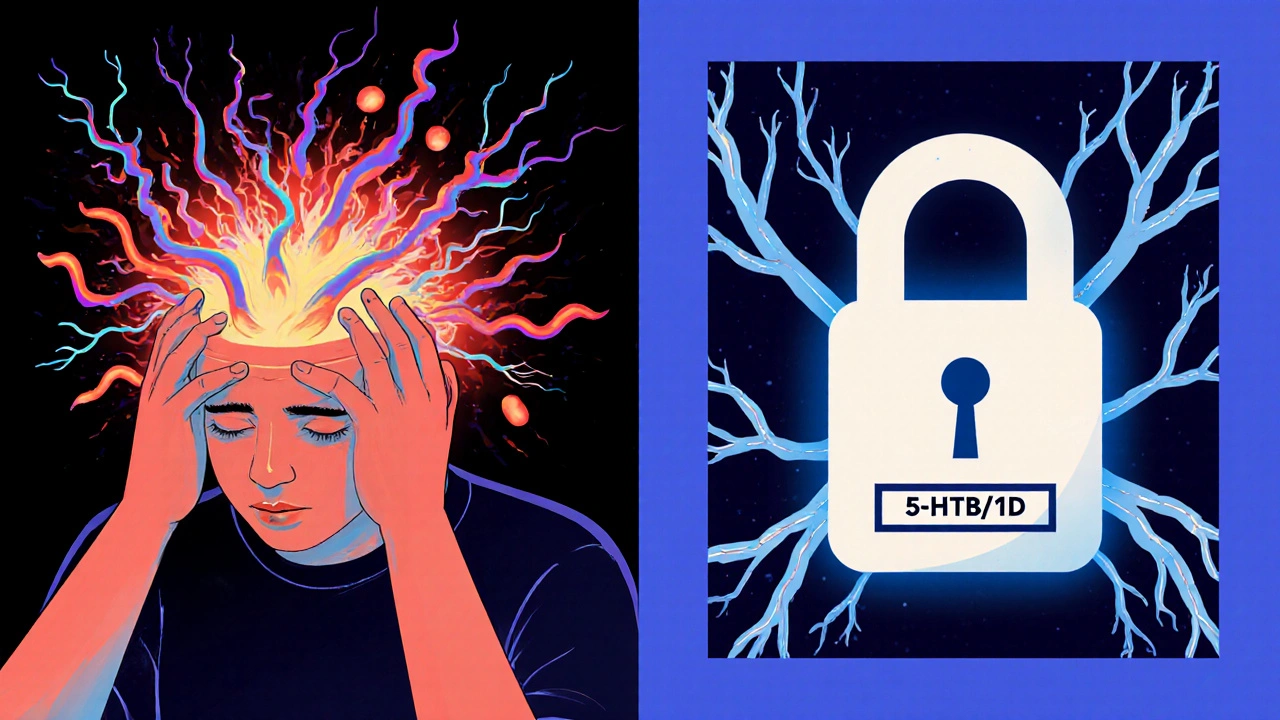Triptan Interactions: What You Need to Know Before Taking Them
When you take a triptan, a class of medications used to treat acute migraine attacks. Also known as serotonin receptor agonists, they work by narrowing blood vessels in the brain and blocking pain signals. But they don’t play well with everything—especially other drugs that affect serotonin. That’s why understanding triptan interactions isn’t just a footnote—it’s a safety must.
One of the biggest dangers is serotonin syndrome, a potentially life-threatening reaction caused by too much serotonin in the brain. It can happen if you mix triptans with SSRIs, SNRIs, MAOIs, or even certain herbal supplements like St. John’s wort. Symptoms? Shaking, confusion, fast heartbeat, high fever, and muscle stiffness. If you’re on antidepressants and your doctor prescribes a triptan, ask: "Could this combo push my serotonin levels too high?" It’s not rare—studies show over 15% of migraine patients on SSRIs also use triptans, and many don’t realize the risk.
Another key player is ergotamines, an older class of migraine drugs. Mixing ergotamines with triptans can cause dangerous blood vessel spasms. Even if you took one yesterday, don’t take the other today. Also watch out for sumatriptan, the most common triptan. It’s often the first choice, but its short half-life means people sometimes take a second dose too soon—leading to overdose symptoms like dizziness, chest tightness, or numbness. And don’t forget monoamine oxidase inhibitors (MAOIs), used for depression and Parkinson’s. You must wait at least two weeks after stopping an MAOI before using any triptan. Skipping this rule can be deadly.
It’s not just about pills. Some OTC pain relievers, like those with caffeine or pseudoephedrine, can raise blood pressure when combined with triptans—especially if you already have heart issues. And if you’re using migraine preventives like beta-blockers or topiramate, your doctor should check whether the triptan still works safely alongside them. The real issue? Many people don’t tell their pharmacist or doctor about every supplement or medication they take. A daily omega-3, a magnesium pill, or even a CBD tincture might not seem like a big deal—but they can change how your body handles triptans.
There’s no one-size-fits-all answer. What’s safe for one person might be risky for another. Your age, liver health, heart condition, and other meds all matter. That’s why this collection of articles dives into real-world cases, patient experiences, and clinical guidelines—not just textbook warnings. You’ll find comparisons between different triptans, what to do if you accidentally mix them, how to talk to your doctor without sounding paranoid, and even how to track your meds so you never miss a critical interaction. This isn’t guesswork. It’s about making sure your migraine treatment doesn’t turn into a health emergency.
Migraine Medications: Triptan Interactions and Limitations
Triptans are the most common acute migraine treatment, but they have serious interactions, contraindications, and limitations. Learn how they work, who should avoid them, and what to do if they don't work.
Read more
